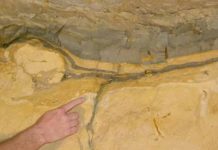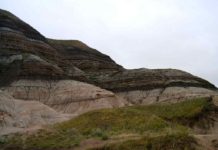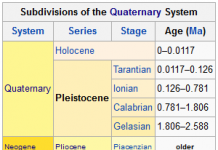Cambrian Series 2 is the unnamed 2nd series of the Cambrian. It lies above the Terreneuvian series and below the Cambrian Series 3. Series 2 has not been formally defined by the International Commission on Stratigraphy, lacking a precise lower and upper boundary and subdivision into stages. The proposed lower boundary is the first appearance of trilobites which is estimated to be around ~521 million years ago. The upper boundary is proposed as the first appearance of either the trilobite species Oryctocephalus indicus or Ovatoryctocara granulata, currently estimated to be around ~509 million years ago.
Naming
The International Commission on Stratigraphy has not named the 2nd stage of the Cambrian yet. The new name will replace the older terms “Lower Cambrian” and “Early Cambrian”. The nomenclature used in Sibera uses the term “Yakutian” for this series.
Subdivisions
The 2nd series is currently subdivided by the ICS into two stages: Cambrian Stage 3 and Cambrian Stage 4. Both of these stages also lack formal definition. The Siberian nomenclature distinguishes three stages (lowest first): Atdabanian, Botomian and Toyonian. In general most subdivisions of this series rely on biostratigraphy of trilobite zones.
Biostratigraphy
The 2nd series of the Cambrian marks the appearance of trilobites. Correlating this event on different continents has proven difficult and resolving this is essential for the definition of the lower boundary of this series. Currently the oldest trilobite known is Lemdadella which marks the beginning of the Fallotaspis zone.
Note : The above story is based on materials provided by Wikipedia











